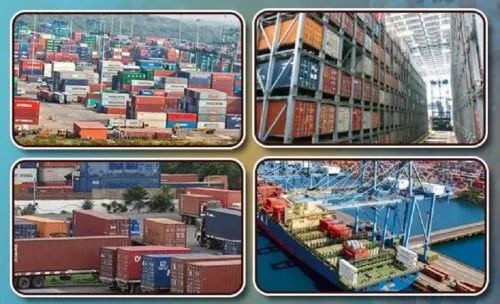Logistics, in many ways, is a force multiplier to the global economy. Besides keeping people and goods connected, it is a critical strategic and operational function, pivotal to the success of any business. The paradigms of logistics and supply chains have gone for a massive overhaul spurred by globalization, the cross-border economic integration of companies, and changing customer behaviour.
Keeping the world connected needs the convergence of the multiple modes of transport like the sea, inland water, air, roads and rail. In an evolving landscape of transportation, we call it multimodal logistics. Amid massive growth in containerization, multimodal is the mode of international transportation. It optimizes all transport modes to achieve operationally efficient and cost-effective delivery of goods in the supply chain.
However, the multimodal logistics chain is beset with challenges since it involves numerous stakeholders- freight forwarders, third-party logistic service providers, couriers, carriers of different modes of transport, multimodal transport operators (MTOs), and rail, sea carriers, port and intermodal terminal operators. Further, black swan events like Covid-19 have amplified the challenges for seamless freight transportation across sea, land and rail.
Deploying digital technologies can ease this complex logistics chain and bring in multiple benefits by providing real-time visibility, efficient data exchange, and better flexibility to react to unexpected changes during shipment.
One of the critical components of this integrated transportation system is Freight resource management systems. Technology solutions can sharpen focus on optimizing and executing resources supporting infrastructure, equipment and production, financial transactions, human resources, transportation planning optimization and vehicle routing & scheduling.
The next crucial component where technology can deliver is Terminal and Port information and communication systems. Take, for instance, a single-window electronic gateway that allows traders to submit all import, export, and transit information required by regulatory agencies. uTradehub in Korea and TradeNet in Singapore represent such initiatives.
A cutting-edge tech like the Internet of Things (IoT) can be deployed effectively in container tracking. A container tracking system usually involves RFID tags attached to the containers, boxes, and pallets included in the shipment, which are read at a number of locations along the way. Using RFID only for container tracking has the drawback that data can only be collected if RFID readers are in place. To get over these limitations, Maersk and IBM have jointly developed a container tracking system) known as tamper-resistant embedded controllers, or Trecs, for large shipping containers. Trecs have back-end software, a wireless network, and sensors that allow shippers to keep track of their cargo in transit remotely.
Another challenge to navigate in a multimodal transport chain is to instantly update the status for a particular consignment. It is possible to greatly reduce the time and cost of point-to-point communication by using a private social network to facilitate instant updates and information sharing across geographic borders. The process can be streamlined further by leveraging Augmented Reality (AR) technology that displays real-time location information. This system provides visual, error-free picking instructions with fully automated tracking of goods and serial numbers, adaptable to every warehouse without requiring major structural changes. To illustrate, Google has already developed Smart Glasses, a voice-controlled /computer combined with AR. The device is equipped with GPS and motion sensors and interacts with the Internet using a natural language. Some applications of this system could include real-time delivery maps displayed for a logistics provider and picking up goods en-route to support backhaul processes.
AR applications can help connect the virtual and real worlds for better decision-making and reduce operations-related barriers. Also, operators can use AR to manage assets and infrastructure in the rail freight operation.
Since technology applications in multimodal logistics generate an immense volume of data, it becomes essential to mine this data right for unlocking value and making insight-driven decisions using Big Data & Analytics. Big Data can be applied to tactical and operational control of transport and logistics systems and strategic business intelligence.
The future of decision support systems for multimodal transport lies in its real-time, dynamic, and integrated nature and enhanced capabilities thanks to technological advancements.






